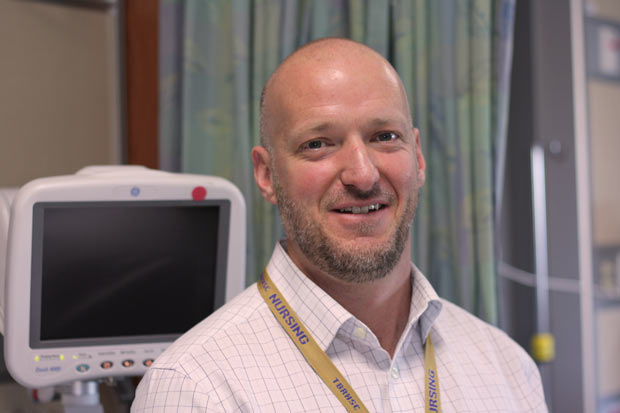

THUNDER BAY – Health – Cardiac Care in Thunder Bay is improving. In terms of admissions, discharges, and transfers, Cardiology is one of the busiest inpatient programs at the Thunder Bay Regional Health Sciences Centre. Patients spend as little as a few hours in the 6-bed angioplasty short stay unit, or as long as a week in the 36-bed inpatient unit after a major heart attack or while waiting to be transferred to another centre for cardiovascular surgery.
Cardiac Care busiest inpatient program
That’s why Wayne Taylor, the Manager of Cardiology since last April, has implemented a number of multidisciplinary and teamwork approaches to help support staff in this high-stress environment – and ultimately improve patient care.
“This is a very active unit,” Taylor said. “We’re sending patients up to the Cath Lab, to diagnostic imaging, we’re flying them out for cardiovascular surgery, we’re admitting and discharging patients from the region… There is a complex workflow involved, and we want to ensure our staff is properly supported to provide the highest level of patient care.”
Taylor has continued the development of a multidisciplinary approach to cardiac recovery to improve patient care and reduce the number of re-admissions. The team has dedicated specialists like social workers, physical and occupational therapists, dietitians, a pharmacist, nurse practitioner, and discharge planners who assist the unit nurses and cardiologists with patient care. This team approach includes an important collaborative element that encourages feedback from all team members to constantly improve care.
On average, Wayne’s unit cares for over 30 patients receiving procedures in the Cardiac Cath Lab. Many patients recover in the special 6-bed short-stay area on 2C dedicated to angioplasty patients.
“With this recovery area, we provide the platinum standard of care for our angioplasty patients,” Taylor said.
Within the 2C inpatient cardiology unit, Taylor oversaw a four-month trial sponsored by the Ministry of Health and Long-Term Care’s Quality Patient Care Fund called the Healthy Work Environment Initiative. This project provided real-time learning for nurses to help them improve teamwork, meet Health Sciences Centre benchmarks for policies like hand hygiene, and improve critical thinking while working in the busy environment.
“The result of this initiative is that we now have a professional practice model of care on the unit that seems to be working very well,” Taylor said.
Another area that Taylor has focused on is improving the patient air transfer process for patients going outside of Thunder Bay for cardiovascular surgery or other services. Previously, a nurse would accompany the patient on the air ambulance in most cases. However in many instances, ORNGE’s own Paramedics are quite capable to oversee the transfer themselves.
“We’re triaging our patients for long-distance transfer to ensure they are getting the appropriate level of care based on medical criteria,” Taylor said. Now nurses accompany patients only in certain circumstances such as for cardiac monitoring or to oversee certain drug infusions.
Taylor is originally from Toronto but moved to Thunder Bay to attend Lakehead University, first for anthropology and then for nursing. After graduation, he began working at the Health Sciences Centre in the Intensive Care Unit and with the Medical Emergency Team (MET), a critical care response team providing emergency care to inpatients at risk of deterioration.






